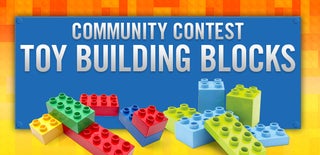Introduction: Lego Stop Motion: Tips, Tricks, and Inspiration
Although Lego stop motion (aka brickfilming) has been around for a while, each person has their own unique ways of animating and dazzling viewers with special effects. The purpose of this instructable is not to show you how to replicate our video, but rather to inspire you. Because we learned how to animate through trial and error I intend to show you some of the challenges we faced and what worked and didn’t work.
Step 1: The Software and Hardware
Before you start animating you will need the right tools and software. I found a free app for MacBook called Zeitraffer, which works well for converting images into animations. I also used IMovie for the sound and some of the video editing. On the hardware side you will need a camera, tripod, and legos.
Step 2: How to Animate
Stop-motion animation is created by taking several images and playing them quickly to create the illusion of motion. To do this you need to first take a picture of your subject. After this, move your subject a little bit and take another picture keep doing this until your scene is finished.
Step 3: Our Stop Motion
I attached our stop motion movie above. This instructable will be far more beneficial if you watch the video before proceeding. Because the file size for our video is so large it may take some time to load. Just remember all good things take time.
Step 4: Water
Our first special effect is the water at 0:44. We wanted to make it look like water was draining out of its container. To accomplish this we removed bits of blue clay between frames. Another way to do this is to gather many blue transparent lego studs and place them in the container. Like the clay remove a little bit between frames.
Step 5: Glowing
At 0:54 we wanted the green dome to appear as though it were glowing. To do this we shined a flashlight onto the dome. We turned the light on and off between frames to make it look like the light was flickering. Also, we showed the light flashing on the scientists and spectators to give the illusion that they were overseeing the experiment through a viewing window.
Step 6: Breaking Through Walls
After the monster comes we added an effect at 1:34 to make it look like the minifigure ran through a wall. To execute this, we traced the minifigure’s shape onto a piece of paper. After this, we cut out the outline and placed the wall back onto our set. Throughout our film you will see we used several different methods for breaking walls. To make your wall breaks more believable try adding rubble as seen at 2:01 and 4:50.
Step 7: Vines
Throughout the course of our movie the monster summons many vines from the ground. To achieve this special effect we used green clay. Between frames we added and stretched the vine to make it look like it was growing you can find this effect at 1:36, 1:41, 2:11, and 5:27.
Step 8: Guns
We came up with two different methods for filming gunshots in our film. At 1:55 we had the minifigure aim the gun and then we played a gun sound effect. However we came up with a better solution. We used a clear orange cone piece and placed that on the end of the gun when it fired. You can see this effect in action at 5:21.
Step 9: Squash
At 3:45 one of our lego minifigures gets stepped on. To make it look like the minifigure was lying flat against the ground, we took off the arms of the minifigure and placed them on either side of the monster’s foot.
Step 10: Making Things Float
When you need to make it look like something’s floating look no further than ye ol’ fishing string. This method may be primitive, but it is highly effective. Attach one end of the string to the prop you want to float and grasp the other end with your hand. We used this technique at 4:13.
Thank you for viewing our instructable. If you enjoyed this instructable please check out our other projects. Also, we would greatly appreciate your vote in the lego contest.

Runner Up in the
Community Contest: Toy Building Blocks














